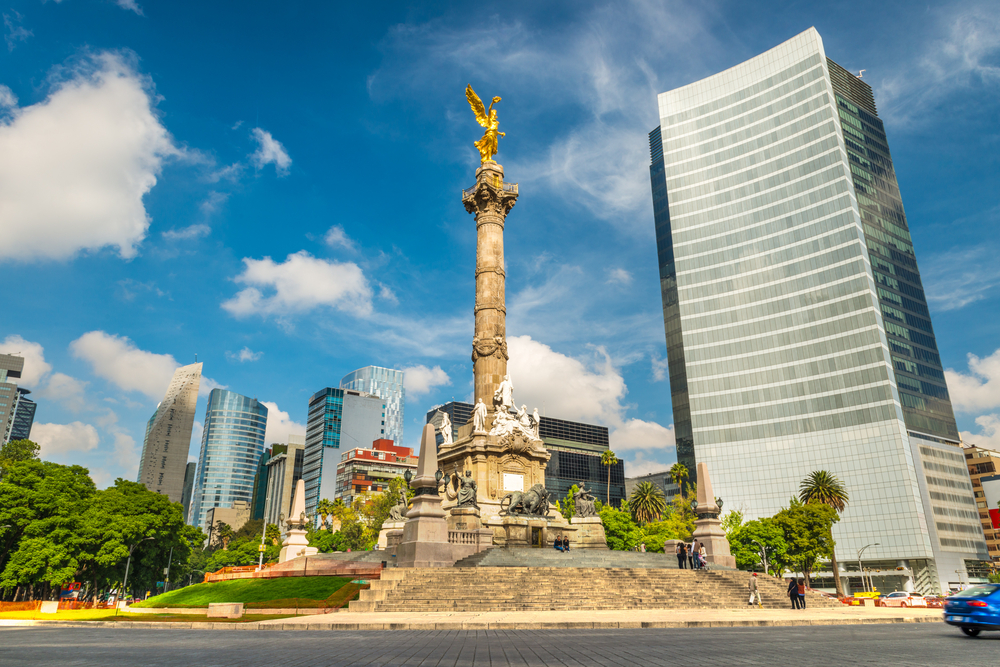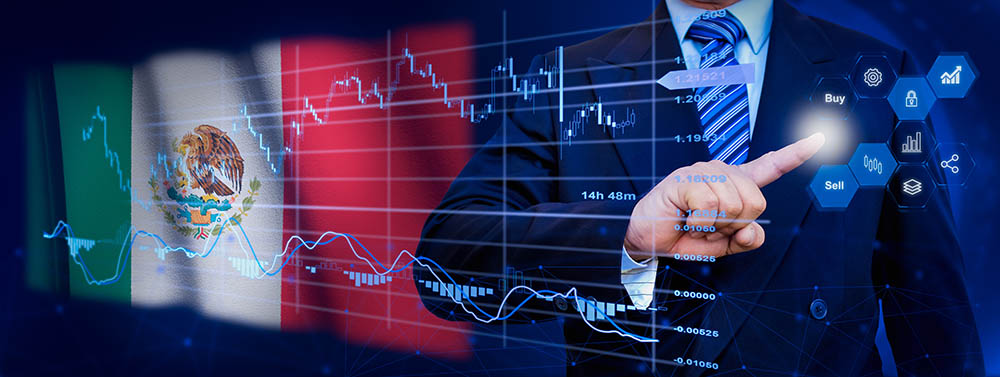Strategic geographic location
With a land area of 1,967,000 km2, Mexico is among the 20 largest countries in the world. Geographically, this nation is located between the Atlantic Ocean and the Pacific Ocean, strategically connecting North America with Central and South America. Due to this connection and its two important access zones to the country by the Pacific Ocean to the West and the Gulf of Mexico to the East, the nation becomes an ideal center for production and international trade throughout the world. In fact, ships from Asia and Oceania arrive through these areas, in addition to facilitating trade relations with Europe and Africa.
With the aim of promoting trade with the rest of the world, Mexico has sought to establish agreements with several economies and international organizations, for example, it was the first country in Latin America to be part of the Asia-Pacific Economic Cooperation Mechanism (APEC). Also, among its latest agreements are the signing of the North American Free Trade Agreement (NAFTA), also known as North American Free Trade Agreement (NAFTA), with which companies benefited from good tariff conditions and reduced inventory, shipping and transportation costs. It should be noted that a shipment by truck can reach any point in the United States within 24 hours.
Qualified workforce with competitive costs
Currently, labor costs and geographic location are Mexico's competitive advantages on the international scene, since it manages competitive and attractive values for businessmen, which encourages investments in the machinery manufacturing, automotive, aerospace, electrical and electronics, among others.
After the critical scenario that was experienced globally due to the health crisis, many business organizations decided to transfer their manufacturing production to developing countries thanks to the good cost-benefit they obtain. Here, Mexico was one of the preferred scenarios for investors and businessmen given its cheaper salary base and its proximity to the main consumer market in the world, the United States.
Currently, the Mexican Government has initiated a campaign to promote its country as a strategic point for the relocation of its operations, since according to estimates made by its Ministry of Economy, production costs including labor, logistics and overhead have a lower value of up to 25%. In fact, the price of direct labor can reach a decrease between 75% and 85% compared to US prices.
To this we must add that the Mexican labor force has an economically active population of 54 million people, with an average age range of 26 years and where 30.7% are fit for work. The Government expects that by 2030 this figure will reach 62 million workers. Additionally, the nation has more than 745,000 students training in the areas of engineering and technology in its university centers. Around 115,000 engineers graduate annually, the highest figure in Latin America and the United States.
Robust network of commercial agreements
Mexico has an extensive network of free trade agreements in the world, which allows it preferential access to 44 countries and more than one billion consumers, which represents 62.6% of world GDP.
According to the Undersecretary of Foreign Trade of Mexico, the treaties help your nation both to promote the internationalization of Mexican products, as well as the entry of multiple valuable goods and services that contribute to improving the quality of life of the population.
In this way, among the most important agreements of the nation are:
- Free Trade Agreement United States – Canada – Mexico (T-MEC).
- Asia-Pacific Economic Cooperation Forum (APEC).
- Free Trade Agreement between Mexico and the European Union (TLCUEM).
- North American Free Trade Agreement (only with Central America).
- Transpacific Economic Cooperation Agreement.
Mexico's main trading partners are the United States, Canada, the United Kingdom, France, Germany, and Japan. Free trade agreements have also been established with the European Union and countries such as Costa Rica, Colombia, Chile, Venezuela, Nicaragua, Bolivia, Norway, Israel, Iceland, Switzerland and Uruguay, among others.
Ideal scenario for foreign investment
According to the Mexican Ministry of Economy, your country captured about 24,831.7 million dollars in Foreign Direct Investment (FDI), in the first nine months of 2021, that is, 5.7% more than the previous year. This shows important signs of recovery according to forecasts from the latest data from the United Nations Conference on Trade and Development (UNCTAD).
For its part, the Mexican Institute for Competitiveness AC (IMCO), emphasizes that FDI has been a vital aspect for the Mexican economy, since with the resources obtained, new jobs are generated, technological innovation is promoted, a greater integration with international trade.
Additionally, the entity also highlights that its country is a strategic point for investors due to its proximity to the United States, the existence of multiple trade and investment agreements, its great wealth in natural resources and the large size of its market. The latter places it as the 14th largest economy in the world and the second in Latin America.
Thanks to the monetary policy managed and implemented by the Bank of Mexico and the Ministry of Finance, the nation has managed to establish a stable and reliable macroeconomic environment that gives both investors and entrepreneurs peace of mind doing business in its territory.
Favorable environment for starting and operating a business
According to the World Bank, Mexico stands out among the best economies in Latin America for its ease of doing business, thanks to the continuous improvement of the regulatory framework for local and international entrepreneurs, where through reforms they strengthened their legal institutions.
In fact, opening a new company in Mexico is a very attractive alternative for many investors who see a gateway to the markets of Latin America, the US and Canada, as well as beneficial operating costs.
Growing domestic market
The domestic market in Mexico is made up of approximately 120 million potential consumers who have increased their annual income, as well as the demand for consumer products.
According to the declarations of Rogelio Ramírez Secretary of the Treasury, during his speech at the National Meeting of Advisory Councils of Nafin Bancomext, Mexico is undergoing an interesting process of economic recovery, where the engine of this process is the internal market that represents around 70% of the national economy, to which is also added the boost of the export sector.
Likewise, the official highlighted that this year domestic consumption in the country increased 3.4% in real terms, reaching 96.5%, its level before the pandemic. He also emphasized that the export sector grew 22.2% annually at the end of the third quarter.
Government commitment to infrastructure transformation
Although Mexico has evolved and become a major global production center, due in large part to its world-class infrastructure facilities, the Government is still in a constant process of maturing. This nation, which ranks 65th in the world in terms of infrastructure quality, has 76 airports, 63 border crossings, 68 seaports and cabotage, 27,000 km of railways and 378,000 km of land routes.
This is how the Mexican Government, through its Secretariat of Communications and Transportation (SCT), undertook a determined plan to update investments in road and border infrastructure projects and a strategy to connect the new Felipe Ángeles airport to its surroundings.
In this way, the agency highlights that with the program "The Strategy for Wellbeing Roads 2021-2023", which is part of the Multi-year Highway Program, it seeks to promote the construction and modernization of highways and rural roads in the nation, which which will require an investment of 50 billion Mexican pesos.
This initiative currently has 26 road infrastructure works scheduled for some 38bn pesos (US$1.9bn), which will be financed by the government. Among the modernization works is the construction of 638.3 kilometers of federal highways and 237.4 kilometers of rural and feeder roads, represented in 11 projects.
Additionally, other infrastructure works will be incorporated, such as the connection of the Dos Bocas refinery to the Roberto Ayala railway station, located in Tabasco, which required a budget addition.
Mexico's ambitious infrastructure development plans continue to create new links for international trade, transforming the economy and fostering the growth of important sectors for the country's economic future such as education, transportation and agriculture.





